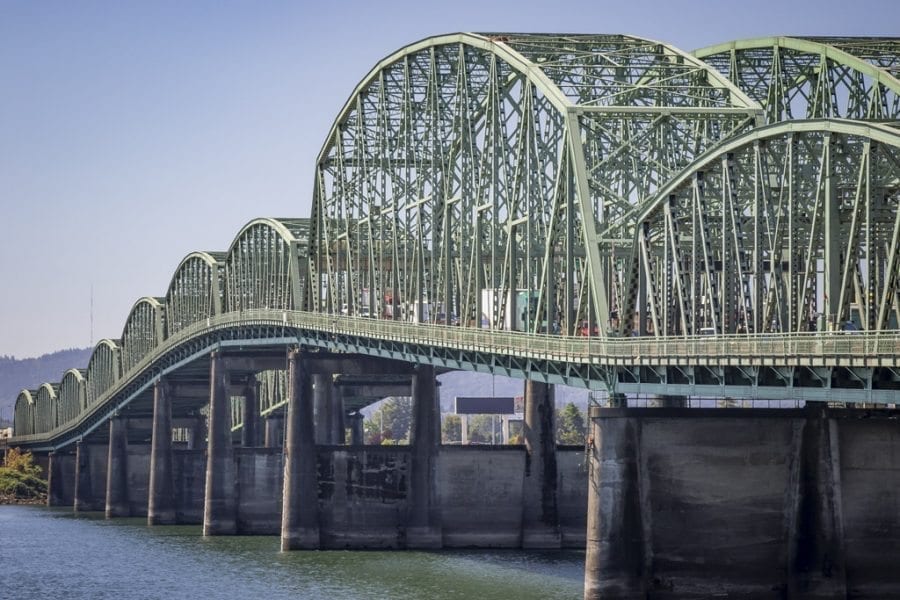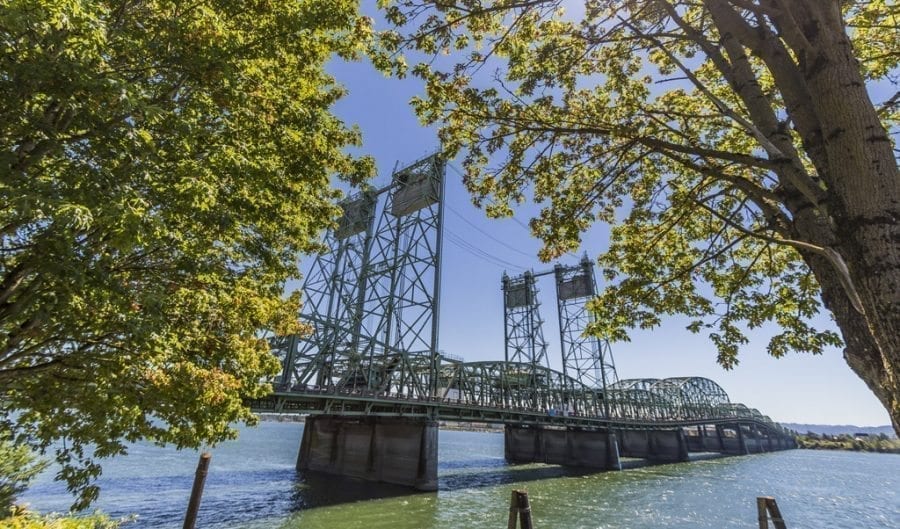VANCOUVER — Rep. Liz Pike is rallying the troops for another effort at finding solutions to Columbia River bridge issues.
“Giving up has never been an option,’’ said Pike (R-Camas), who recently introduced House Bill 1222 in the Washington State Legislature. The bill would create a bi-state bridge legislative work group. “I will support this effort or any other similar bill offered by other legislators so long as it achieves stated objectives to improve freight mobility and relieve congestion with affordable options.’’
Pike’s bill would keep the committee to eight legislators from each Washington and Oregon, including an equal number of Democrats and Republicans. The group would then be required to report its recommendations to the transportation committees of the legislature by Dec. 1, 2018.
“HB 1222 is even better than the 2016 version that passed out of the House Transportation Committee with a unanimous vote,’’ Pike shared with area residents on her Facebook page. “While the new version keeps the committee to eight legislators from each state with an equal number of Democrats and Republicans, it directs the legislative work group to address not just the I-5 corridor, but to also identify new corridors and develop a 10-year plan, 25-year plan and 50-year plan.
“Addressing new cross river solutions to improve freight mobility and relieve traffic congestion remains a top priority,’’ Pike wrote. “In many recent conversations with Oregon state legislators, it is clear they want a process, not a project. I agree with them. Nothing will be built across the Columbia River until Oregon and Washington legislators sit down, eyeball to eyeball across the table to discuss and come to agreement on affordable solutions that our citizens will support. House Bill 1222 is an action bill that achieves this.’’

Pike has scheduled a town hall meeting for Sat., Feb. 11, 10 a.m. at the Clark College’s Columbia Tech Center location, 18700 East Mill Plain, in Vancouver. Pike is expected to be joined by several speakers with insight into the area’s bridge issues. Those in attendance will also have the opportunity to ask questions.
One of those guest speakers will be Kevin Peterson, a transportation architect and planner based in the Pacific Northwest. Peterson has more than 35 years of experience on projects not just in the Pacific Northwest, but all over the world.
“There’s really very little new or innovative thinking that needs to be brought into the discussion,’’ Peterson said. “What needs to happen is people need to cope with the issues, which are lack of capacity and the congestion that results. It’s very sad for the community. It really doesn’t have a long-term vision to cope with the mobility needs of its population.’’
Peterson cited estimates that the Portland Metropolitan area, including Clark County, could double in population in the next 30-40 years.
“But, the long-range vision is seldom more than 5-10 years in the future,’’ Peterson said. “People in the Portland-Vancouver are their own worst enemy when planning for the future because they can’t come to grips with the reality. There is no plan on the books to look at the inter-connecting of any corridors that are simply expanding.’’
Peterson worked on plans for the Columbia River Crossing project, which would have replaced the existing I-5 bridge. But, he is a proponent of a third and even a fourth crossing over the Columbia River.
“It seems silly that there are only two crossings across the Columbia River,’’ Peterson said. “The talk is that the population will double in the next three or so decades and that seems quite reasonable. I don’t see any reason why that’s not going to happen. If you’re looking out four or five decades, it seems ridiculous to funnel all that metropolitan mobility into two corridors.’’

Without creating another corridor or two, Peterson said replacing the existing I-5 bridge would do little to help with congestion issues in the area.
“I don’t think anyone can assume any additional capacity of any value on either side (of the I-5 bridge) simply because Portland will not increase its capacity through downtown Portland,’’ Peterson said. “If you build (an I-5 bridge) with 100 lanes, you will have a 100-lane parking structure. If you build it with four lanes (each way), you will have a four-lane parking structure.’’
It’s Peterson’s claim that including light rail on an I-5 bridge project also would be a waste of time or money.
“Extending the yellow line into Clark County, from a capacity point of view, is worthless right now,’’ Peterson said. “The yellow line is operating at 25-35 percent of its ultimate capacity of trains you can shove down the line. If it’s operating at half of its ultimate capacity, it needs to be reserved just for the population in north Portland.
“I think the people of Portland are smoking something that’s affecting their long-term judgment,’’ Peterson said. “What makes sense is that Portland is going to have to operate more of a bus rapid transit operation. You’ve got to get people on buses if that (I-5) corridor is going to grow like people say it’s going to grow.’’
Peterson predicts that Washington lawmakers will have a difficult time getting their Oregon counterparts to reverse their positions on light rail attached to any project to replace the existing I-5 bridge.
“They would have to admit they were wrong to suggest extending the yellow line into Vancouver and say ‘now we want buses’,’’ Peterson said. “Politically, I don’t see that happening in the next decade. They’re stubborn people.’’
Peterson believes there are considerable obstacles to constructing a westside crossing, linking Vancouver with Beaverton, Ore. He believes there are fewer challenges with an eastside crossing, connecting 192nd Ave. in Vancouver to Gresham and Troutdale, Ore. He cites a 2008 study that “tells us if we were to build a bridge in the east corridor, it would immediately decrease the demand on the I-205 bridge.
“There are a lot of mobility connections that people haven’t really studied and haven’t fully understood the consequences of creating fully-functioning new corridors that will simply cause people to want to move about,’’ Peterson said.
Peterson hopes his contribution to Pike’s upcoming Town Hall will promote some thoughtful consideration by those in attendance.
“I view my presentation as raising the points that will set the stage for meaningful questions from the audience,’’ he said.




